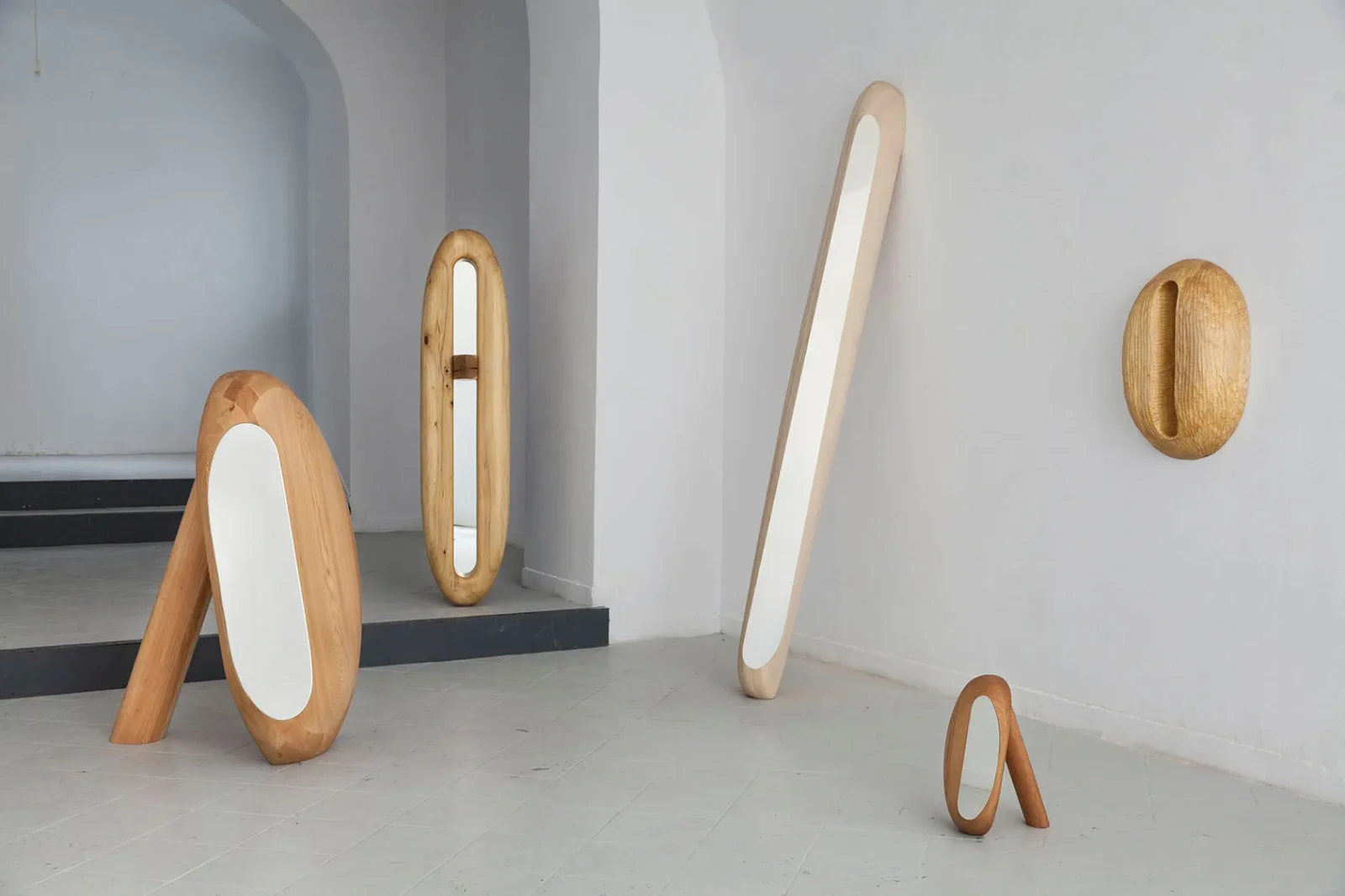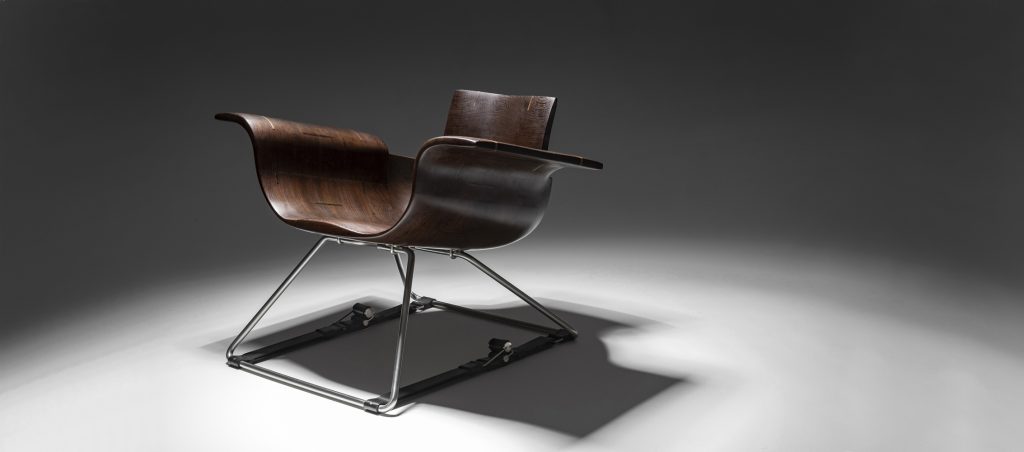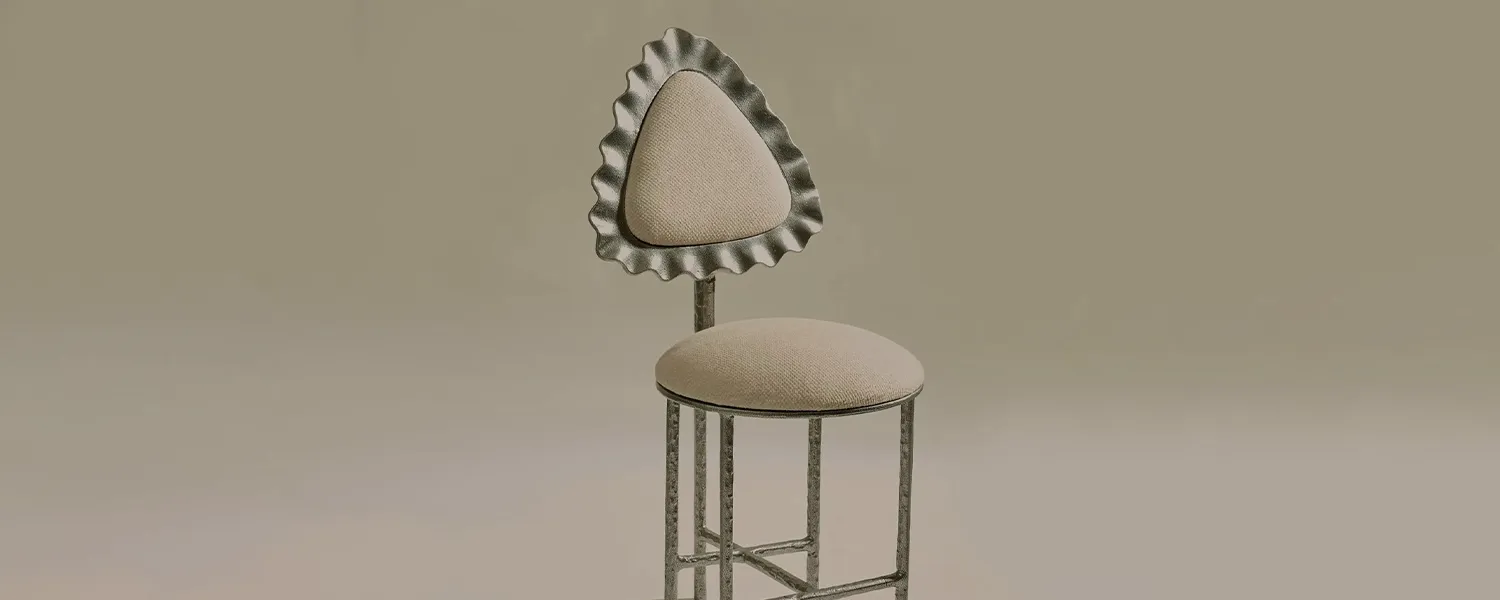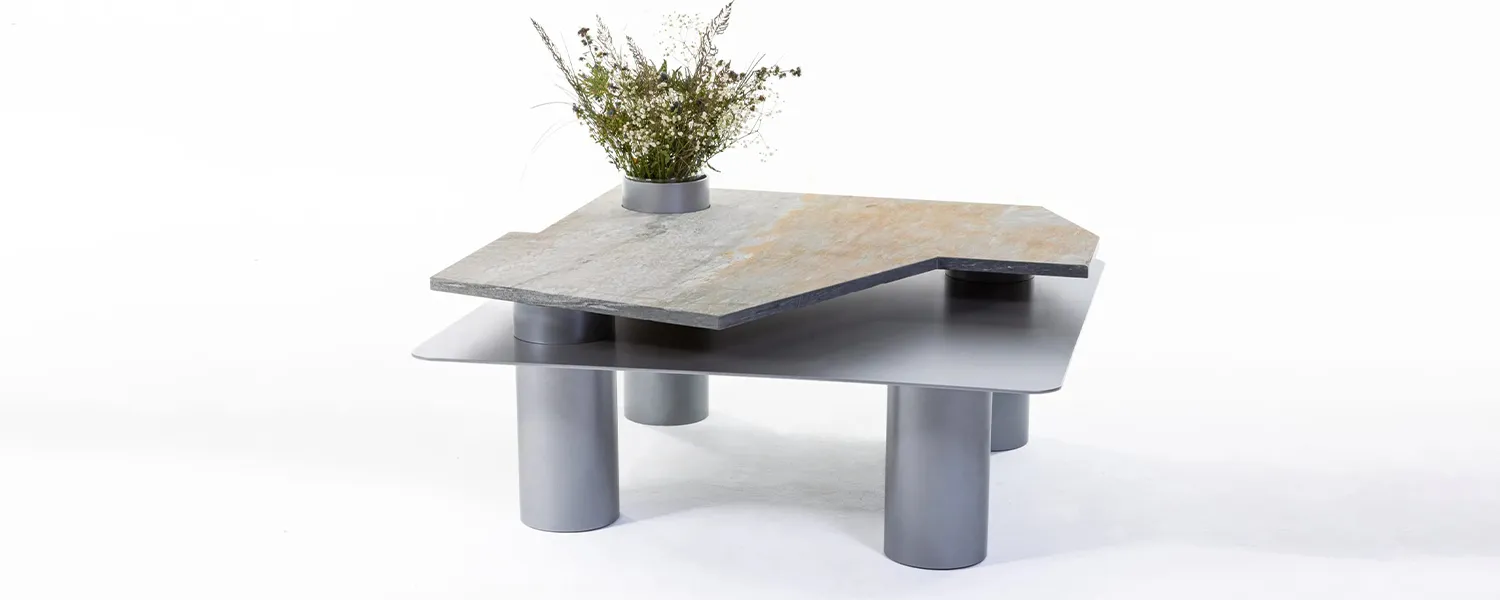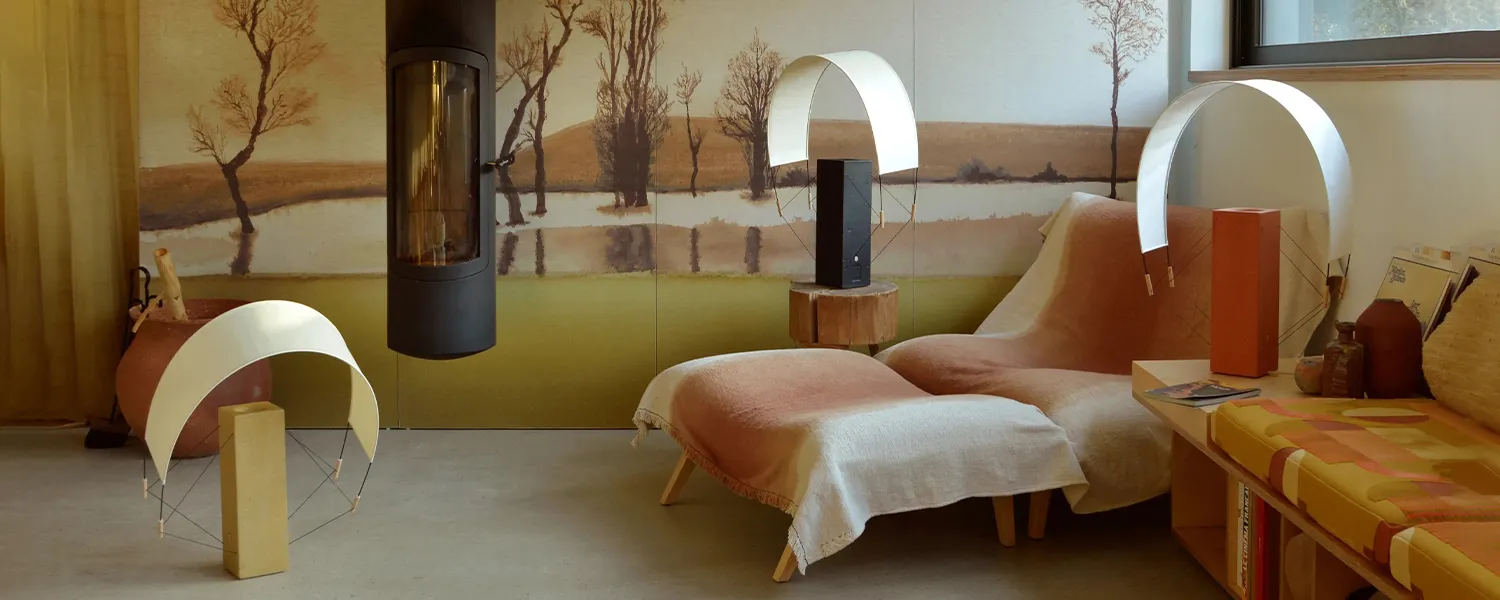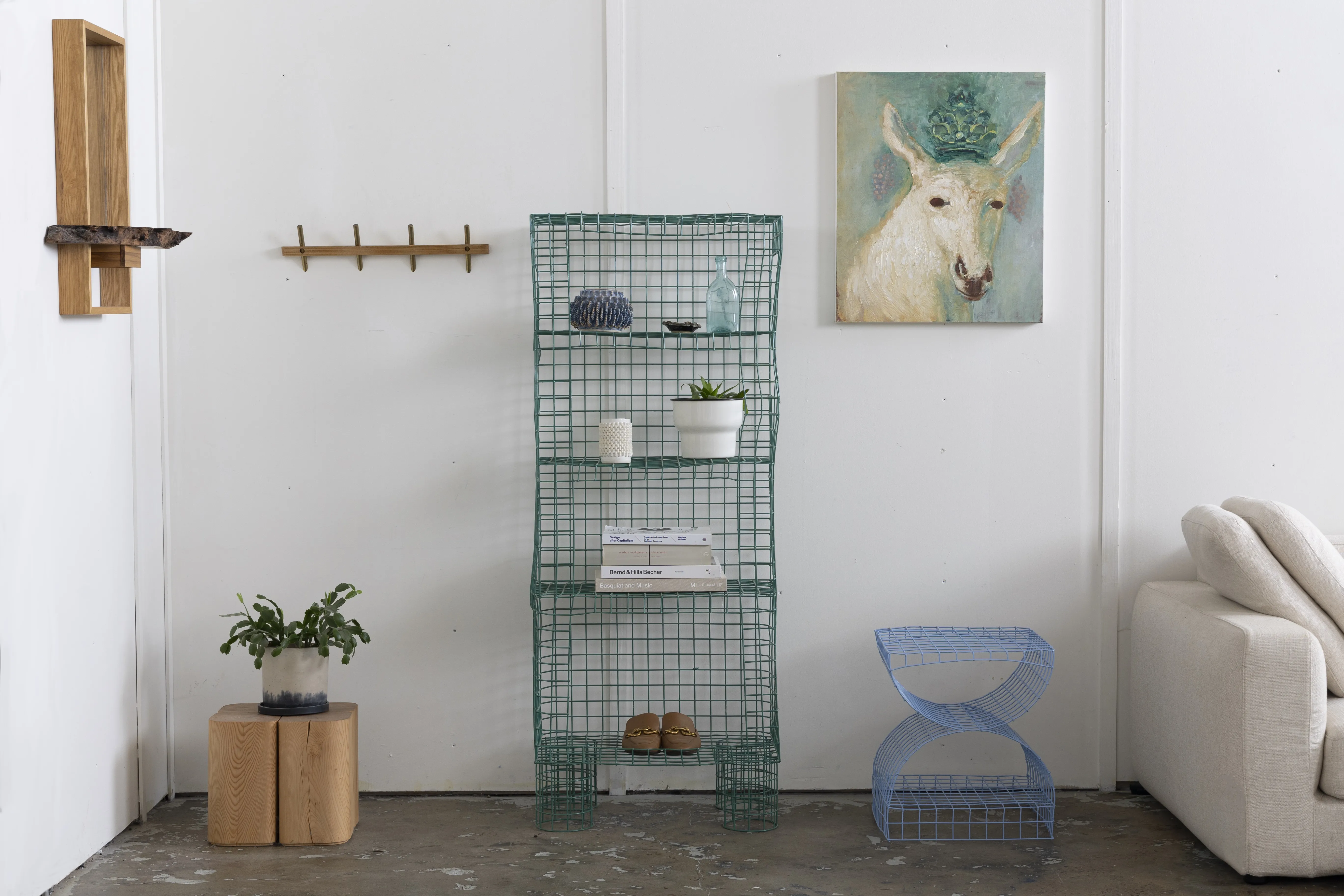
Waste Not, Want Not: The Rise of the Thrifted Movement in Design
The design world is recalibrating its value systems. As global consumption rises, a counter-movement has emerged where creatives find beauty in the discarded, the thrifted and overlooked. This shift is not only about environmental consciousness but a broader cultural dialogue on material worth and meaning.
The numbers reflect this change. In 2025, the global secondhand market reached $264 billion, with 37% of consumers increasing spending on secondhand apparel. The resale industry is projected to outpace traditional retail by nine times by 2027. These figures suggest a reimagining of how objects acquire and retain cultural significance.
Designers have become cultural archaeologists, transforming industrial waste, construction debris, and thrifted and found materials. Their work shifts away from modernist ideals of progress and newness, showing that innovation often arises through transformation, not traditional creation. This transformation manifests in three approaches: repurposing found objects, imbuing salvaged materials with new context, and metamorphosing waste into entirely new substances. Each reflects a unique relationship with time, memory, and material culture.
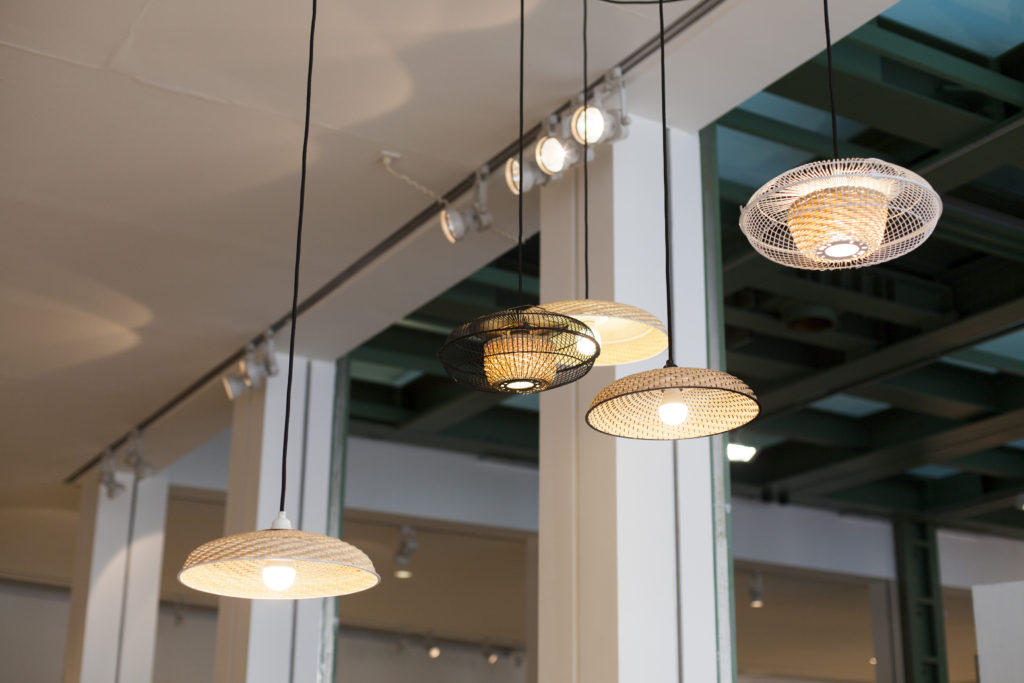

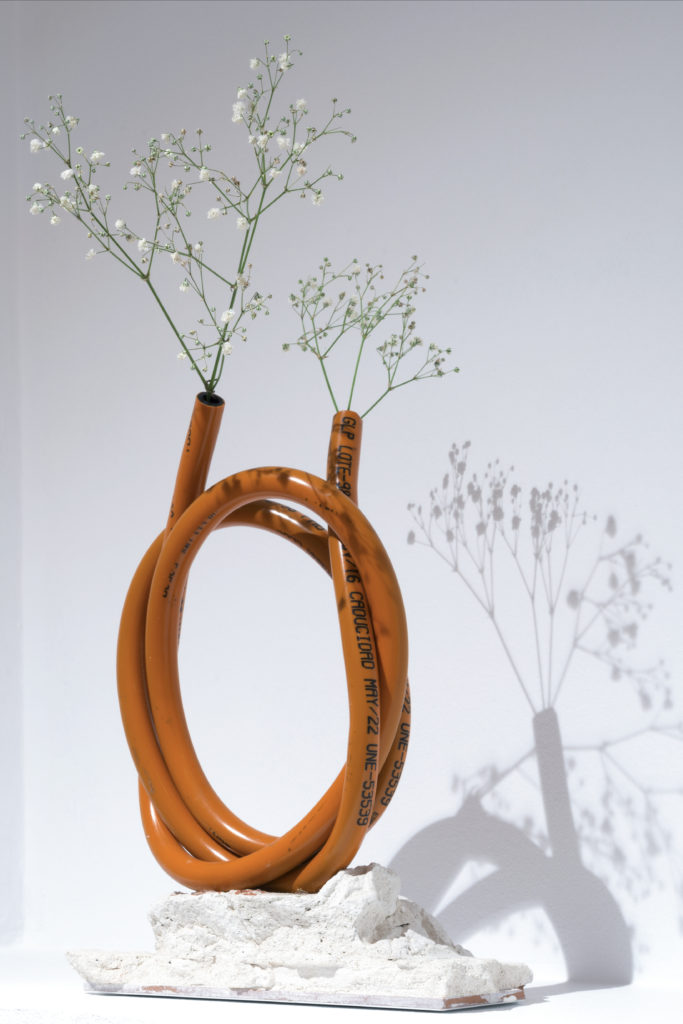

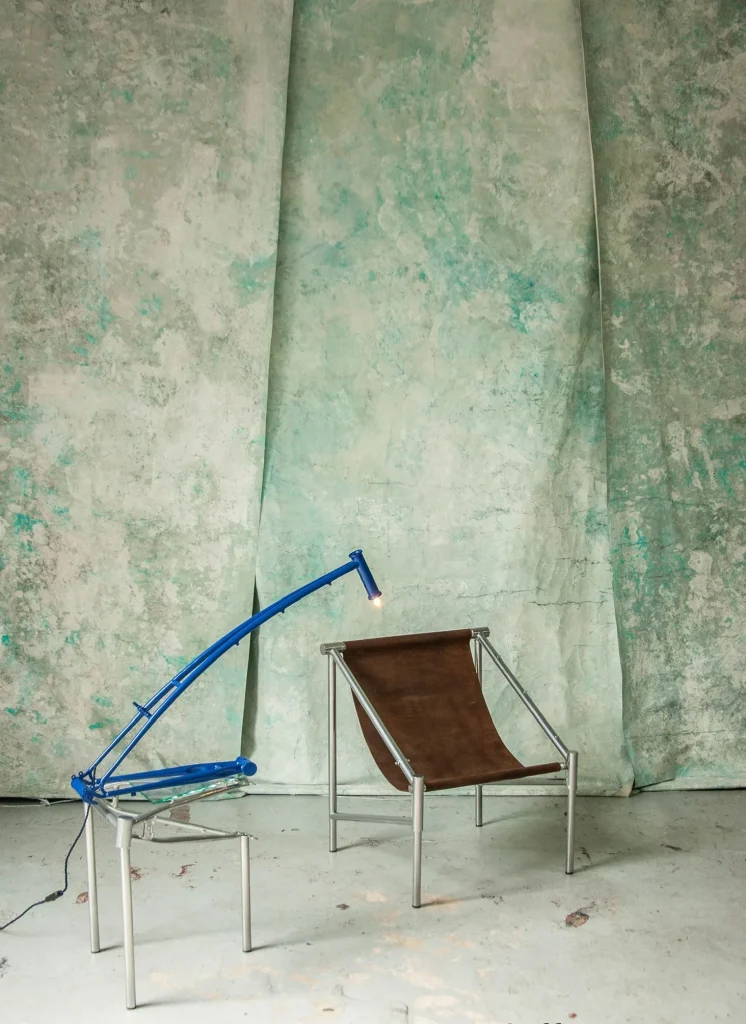

Repurposing with Purpose: Preserving the Past in New Forms
Juyong Shim’s Horn Series reinterprets the form and structure of the speaker horn – an industrial relic now considered obsolete. By reworking decommissioned audio system horns into everyday furniture pieces such as shelves, side tables, and stools, the project breathes new life into forgotten objects.


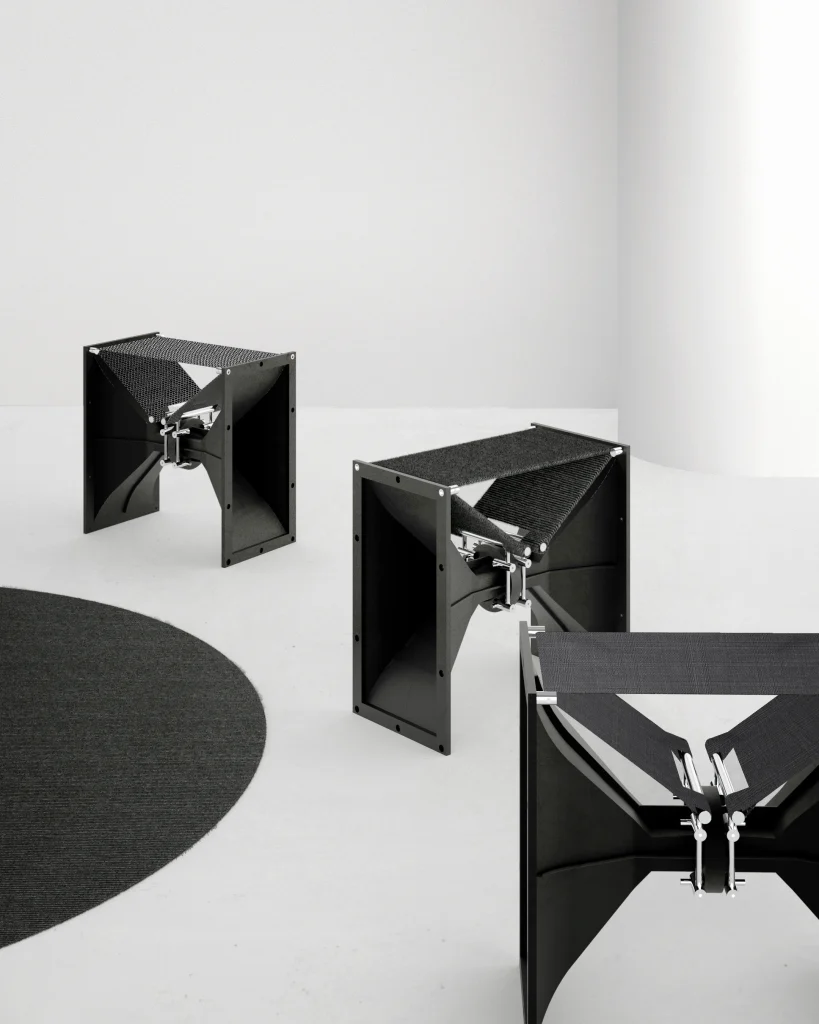

Lauren Goodman’s Fresh Catch series addresses ocean waste by salvaging abandoned lobster traps from Maine’s coastal waters. The traps are carefully deconstructed and welded into furniture that retains their maritime identity while serving domestic functions.
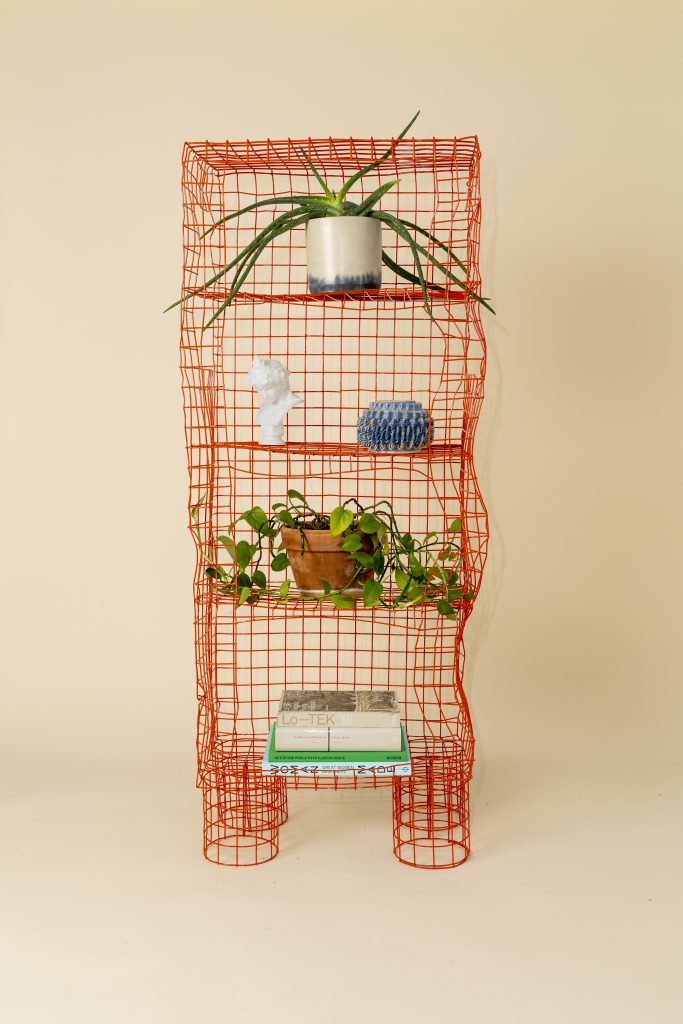

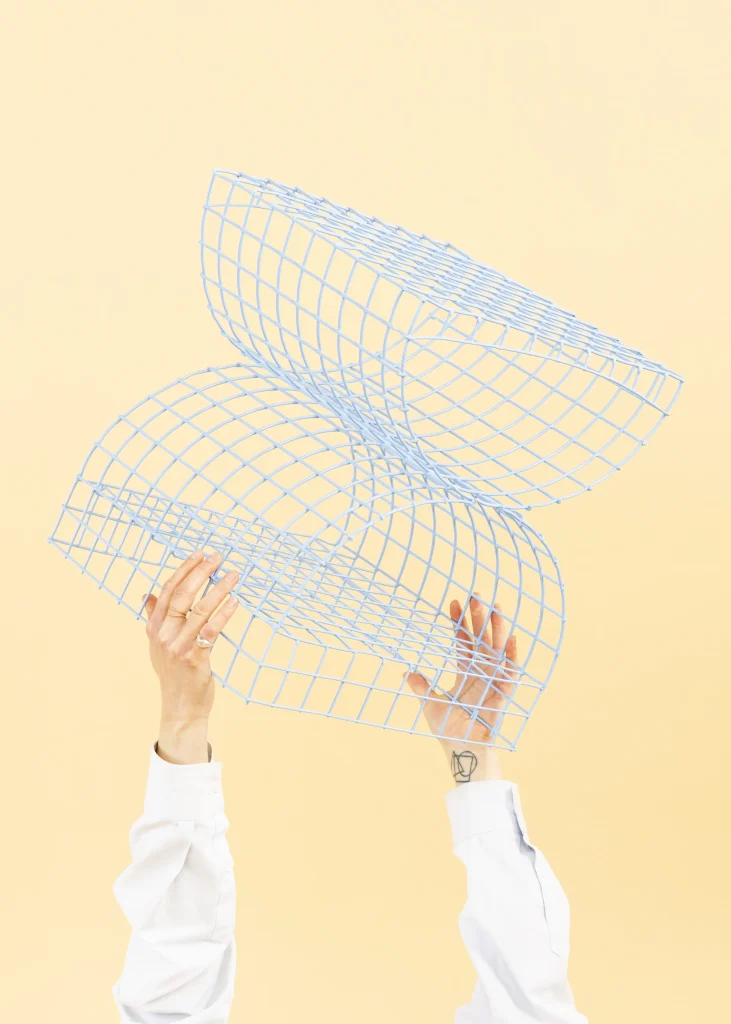

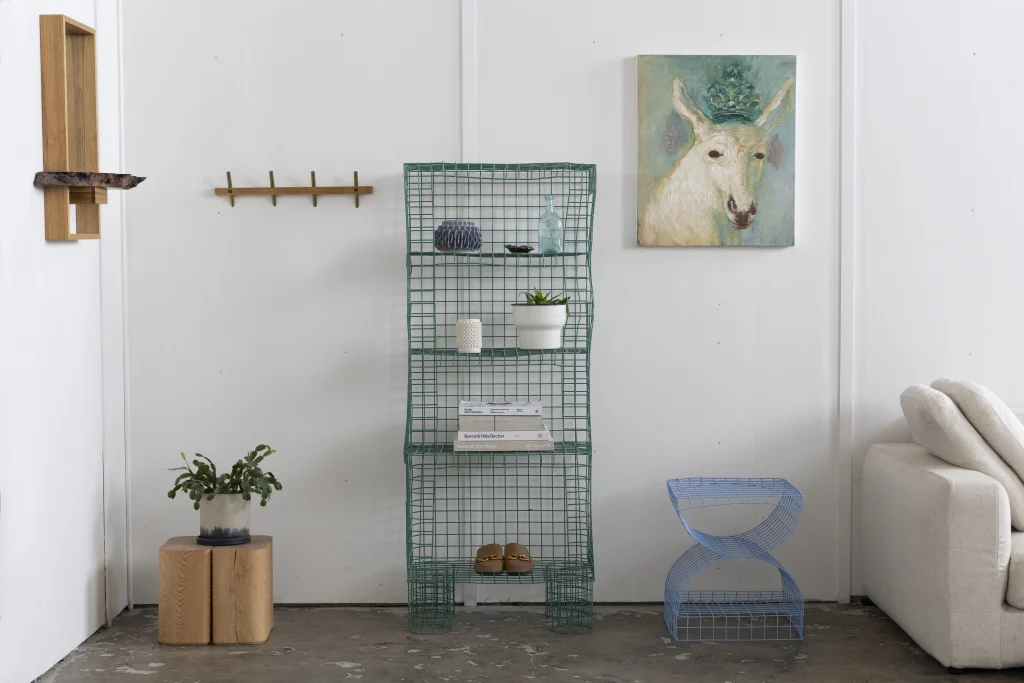

StorqueStudios‘ Pregnant Lady floor lamp transforms a thrifted mannequin into sculptural lighting. The designers describe it as “regenerated bodies of light,” turning an object representing human form into an emblem of renewal, carrying profound symbolic weight into new contexts.
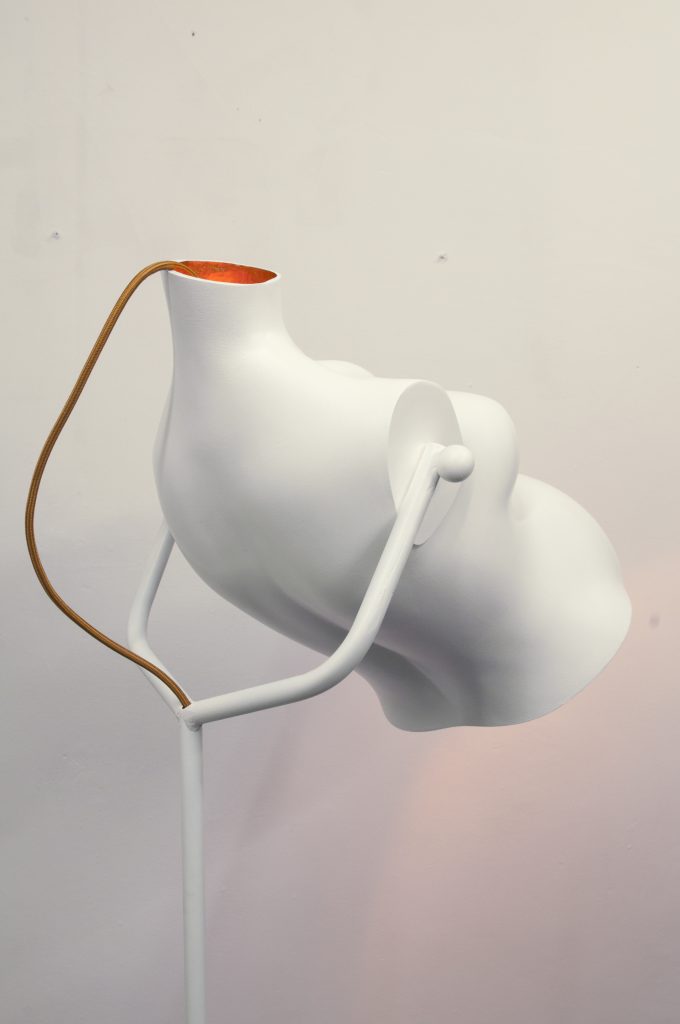

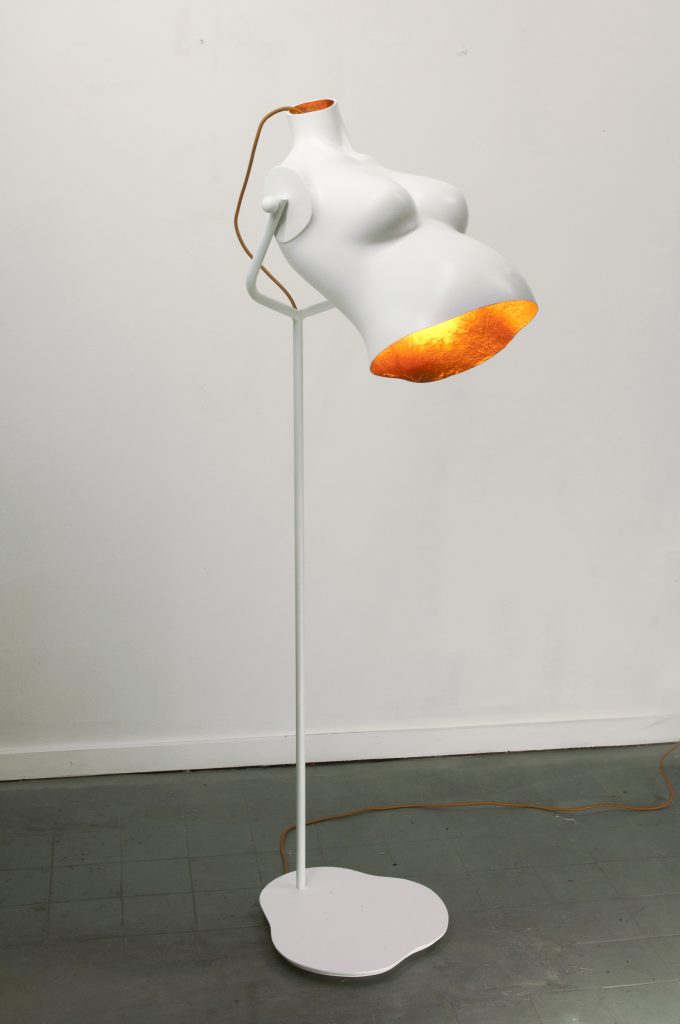

Cara Campos‘ O.F.F series incorporates bicycle frames into domestic furniture, with the Steel Lounge Chair using road bike front triangles. Campos emphasizes that her work goes beyond upcycling – it “pays homage” to the materials’ intangible value.
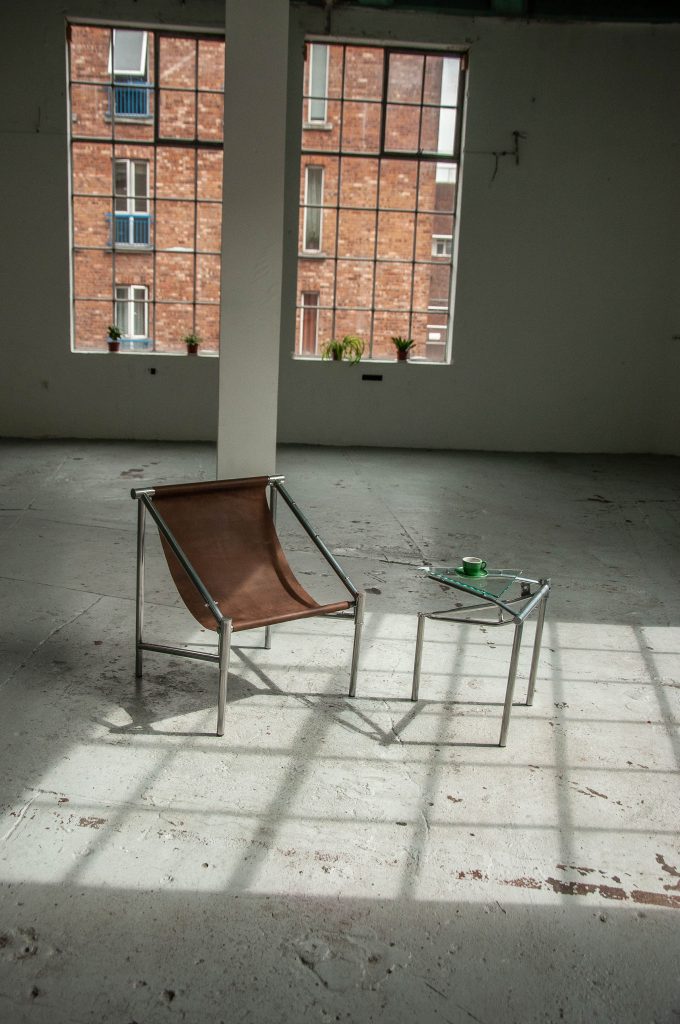

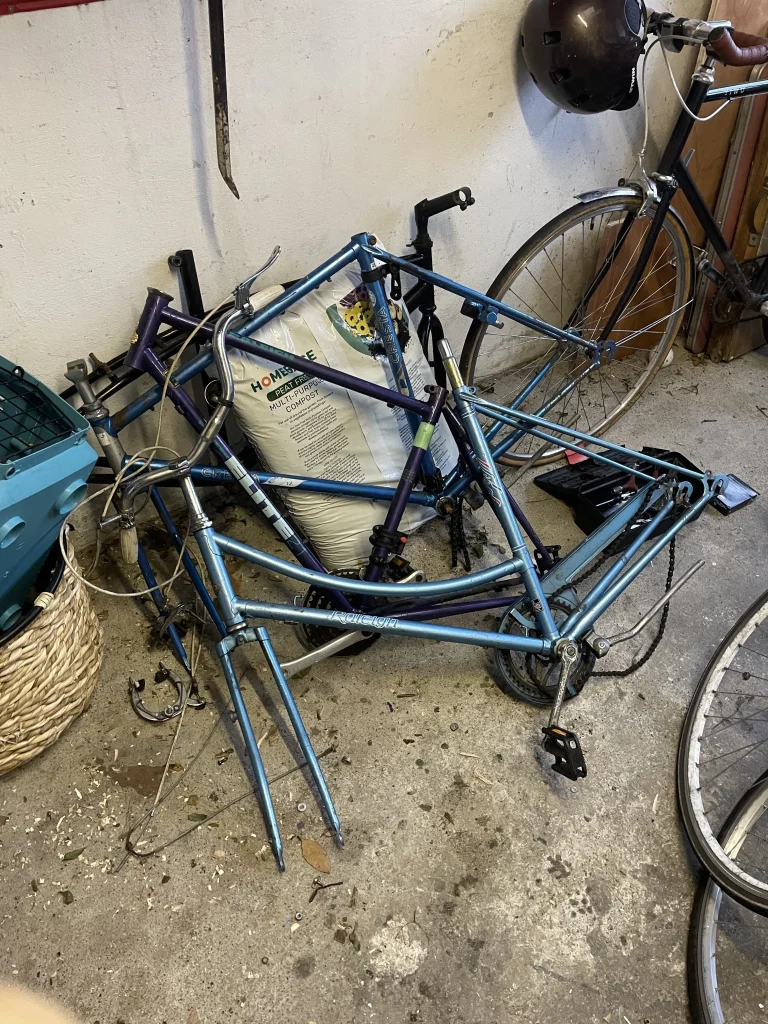

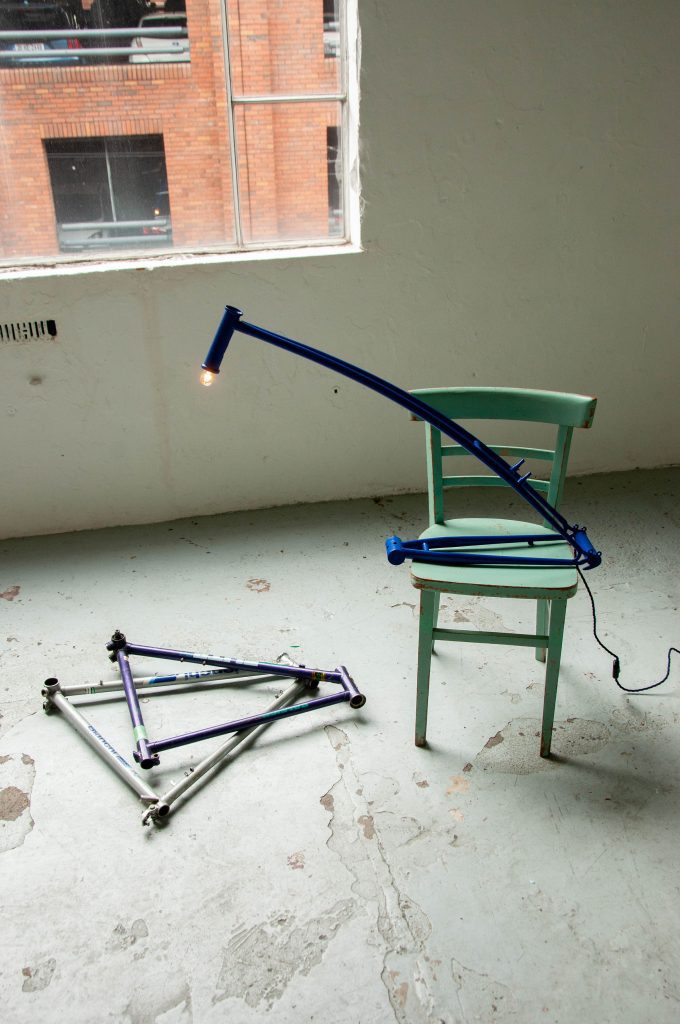

Bulb – Glass Cuttings Vase by Olle Sahlqvist uses upcycled lamps to create a small holder for propagating houseplants. Designed as a modern take on plant propagation, the vase encourages growth by providing a space for plants to develop new roots and stems, forming independent, thriving plants from discarded materials.
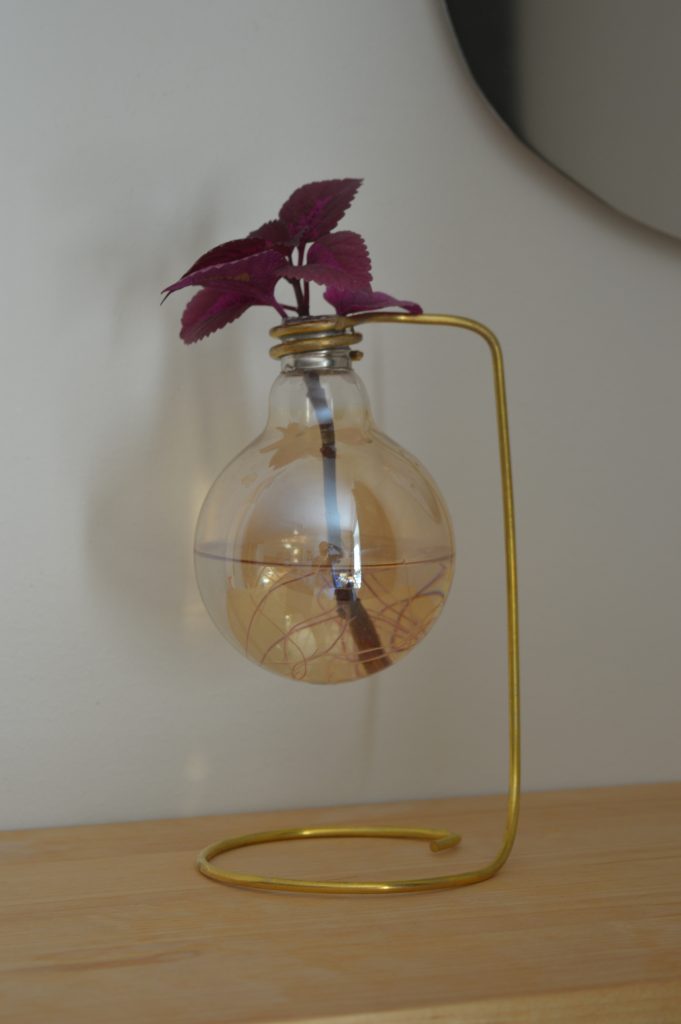

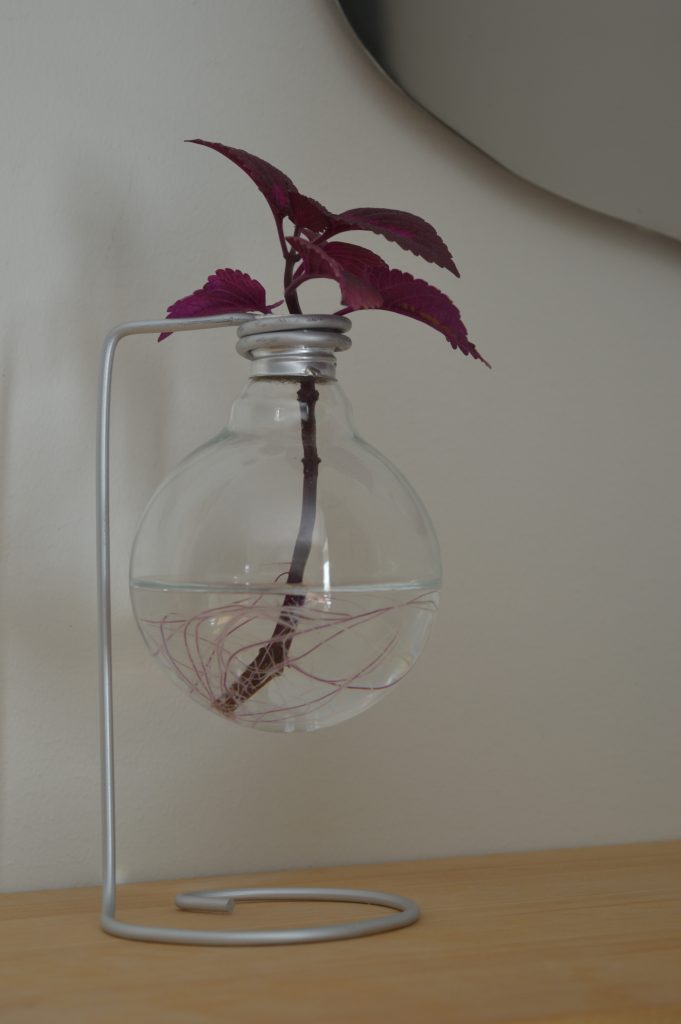

Salvaged Stories: Breathing New Life into Historical Materials
Materials that retain their original character while assuming new contexts serve as vessels of collective memory. SKNYPL’s Living Sculpture collection repurposes 200-year-old pine from a Georgian railway sawmill into modular furniture, imbuing each piece with history while adapting it for modern use.
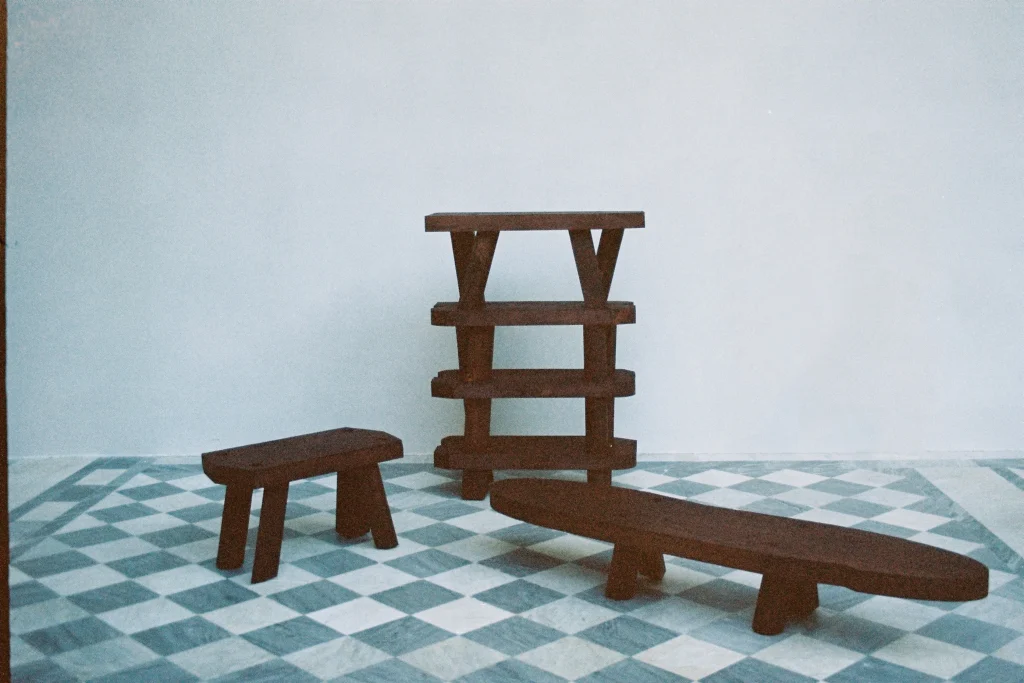

StorqueStudios‘ Bimschtal bench series celebrates the wear of construction beams, embracing scratches and screw holes as design features. Birch plywood inserts not only repair the beams but accentuate their patina, highlighting authenticity.
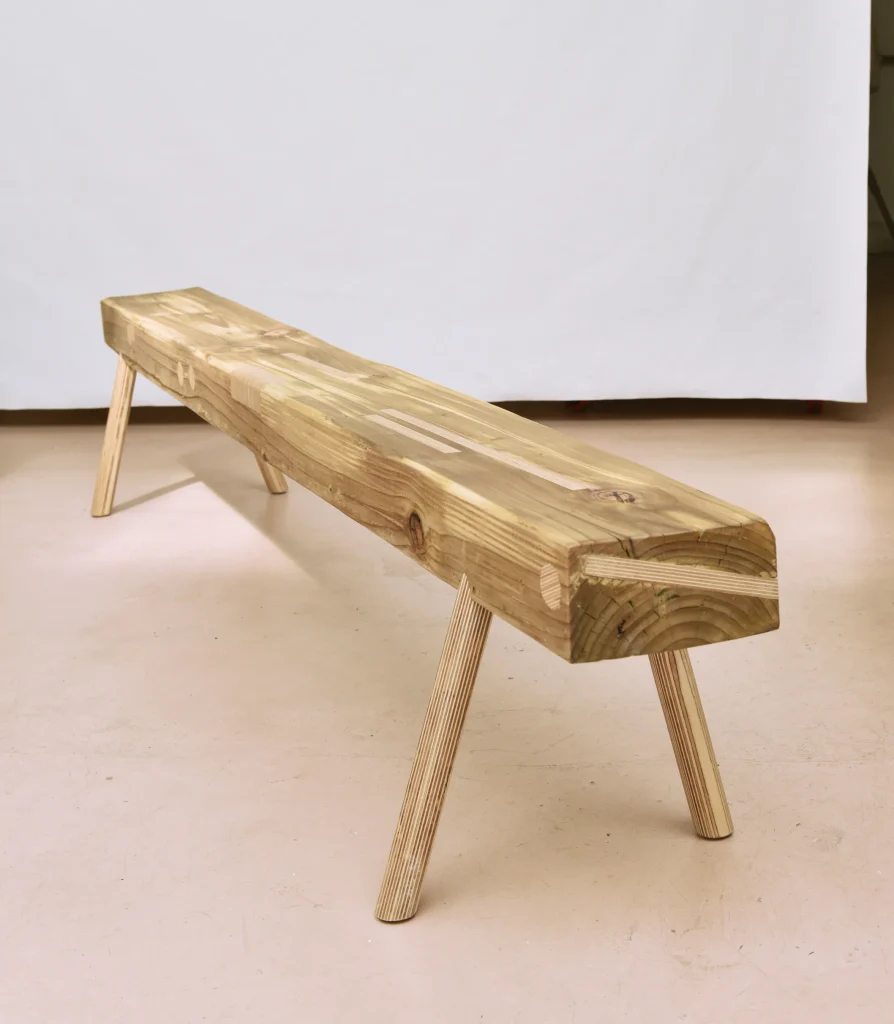

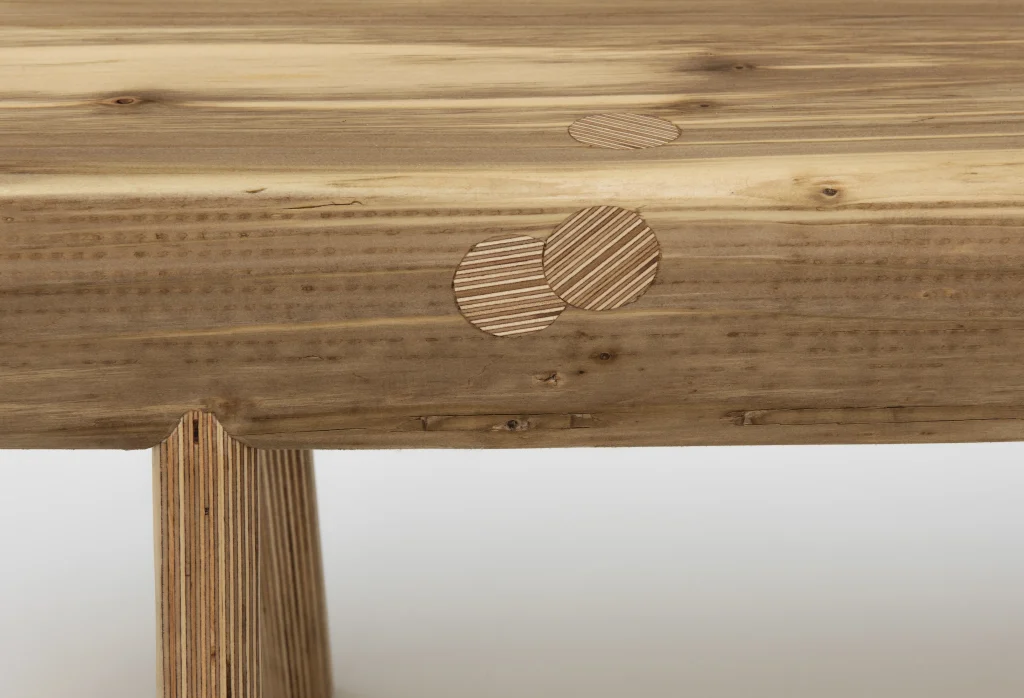

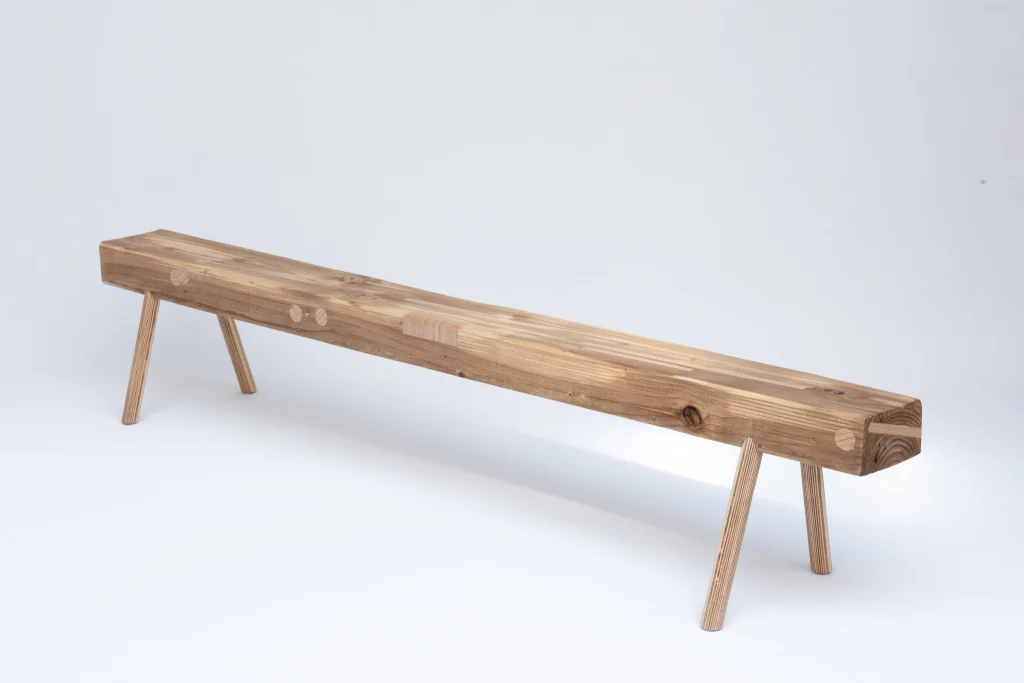

Oskar de Roover’s Broken Mirror collection transforms damaged brown marble into sculptural art, with precision-cut mirrors inserted into natural fractures, creating a contrast between chaos and control – a dialogue between destruction and creation.
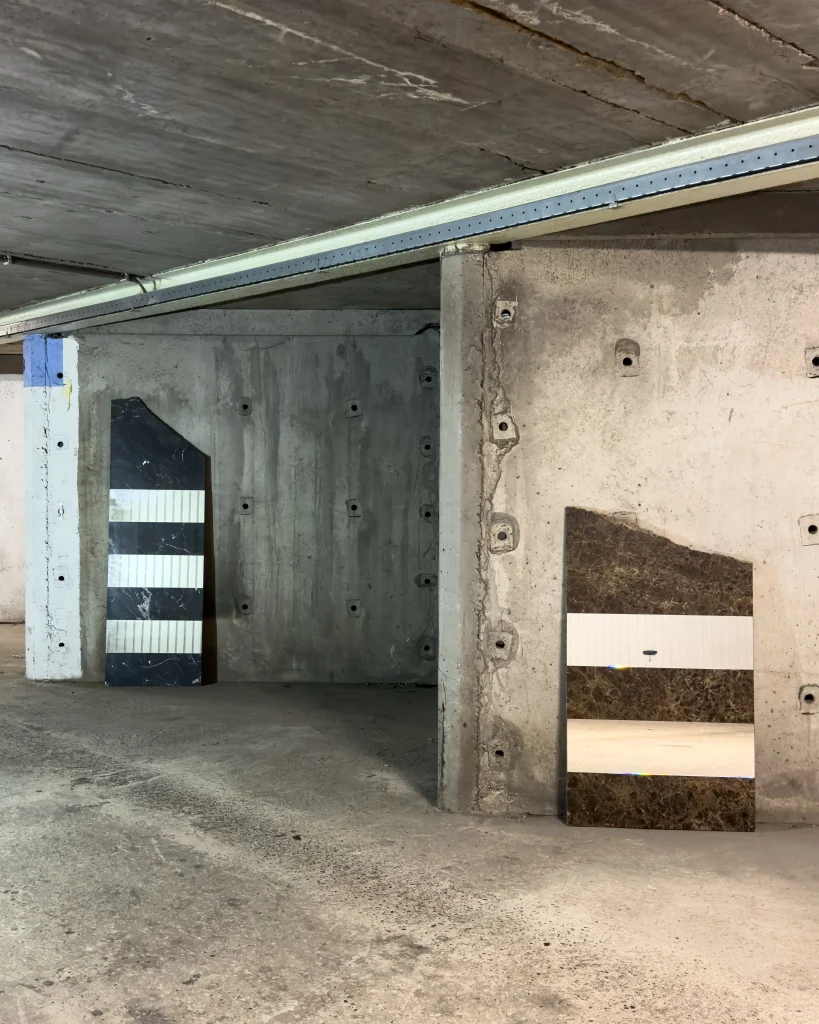

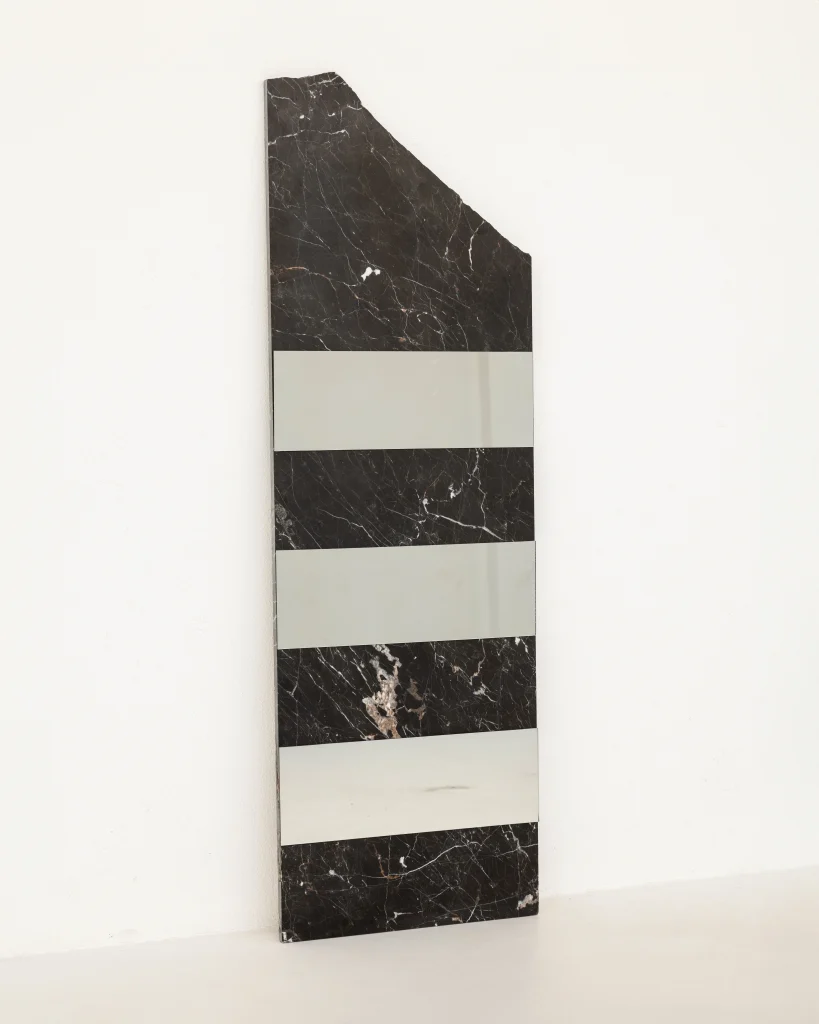

Emil Keller’s Hartleder Sustainable Cowhide Chair reimagines second-grade cowhide – discarded for imperfections – using animal fat for hardening. The chair requires no additional materials, offering full support while reusing by-products from the meat industry. With 45% of cow skins discarded in Western countries, Keller’s chair provides an ingenious sustainable solution.
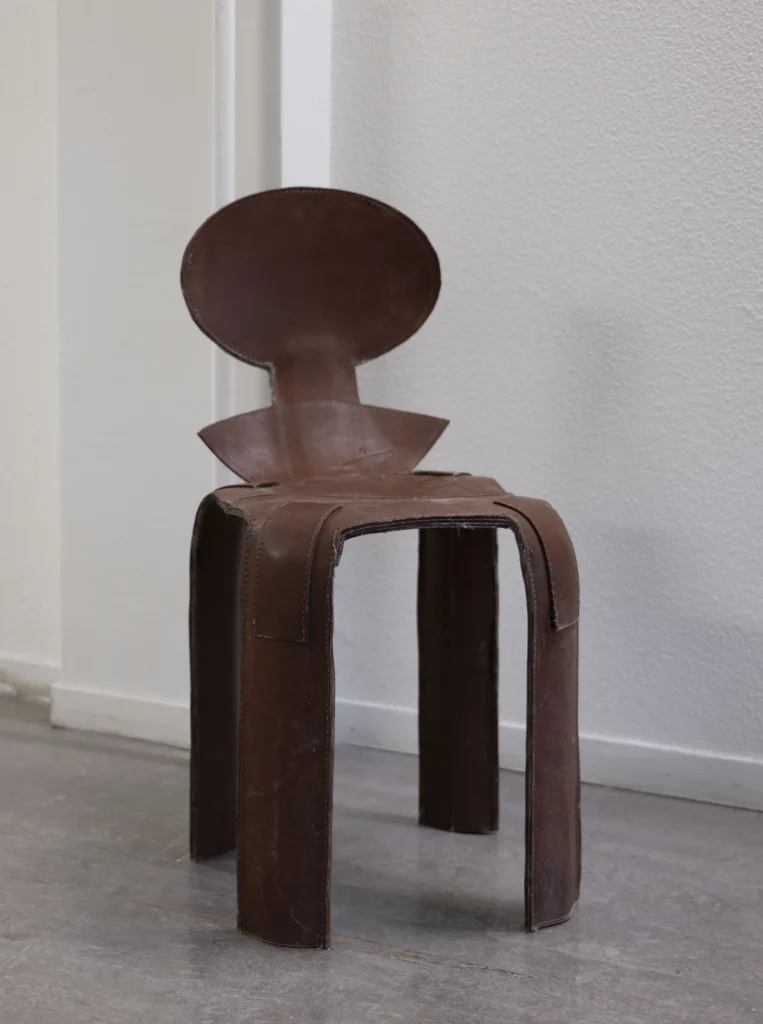

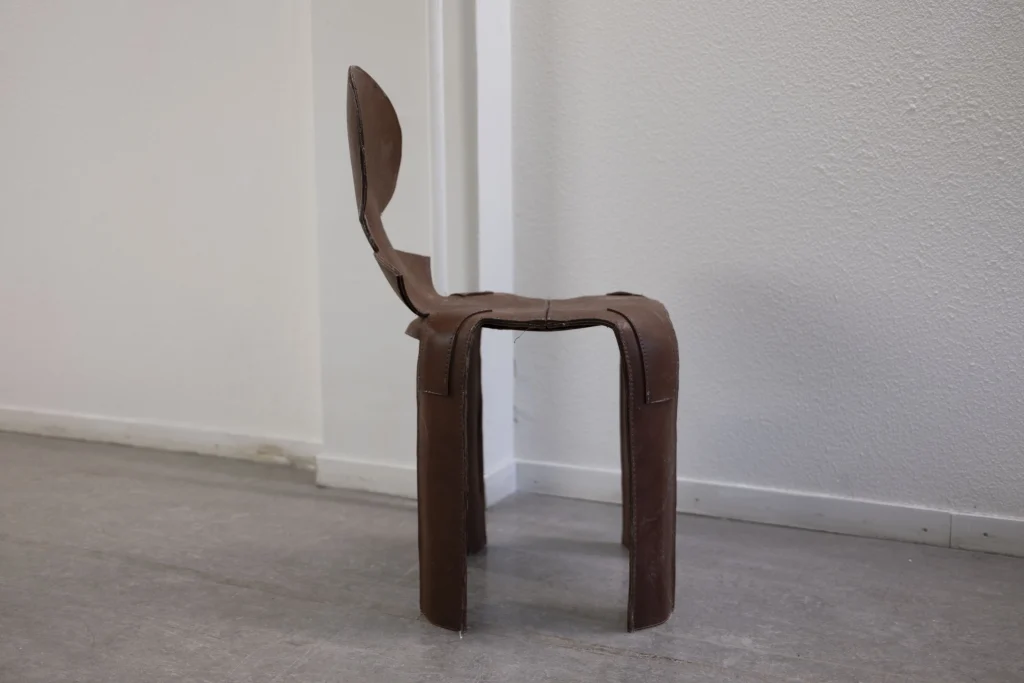

Nolan Talbot-Kelly’s Contemporary Waste collection, including the Hood Light made from found stainless steel ductwork, transforms industrial remnants into sophisticated design. The perforated surface creates dappled light, while wing nut fasteners retain references to the material’s mechanical origins.
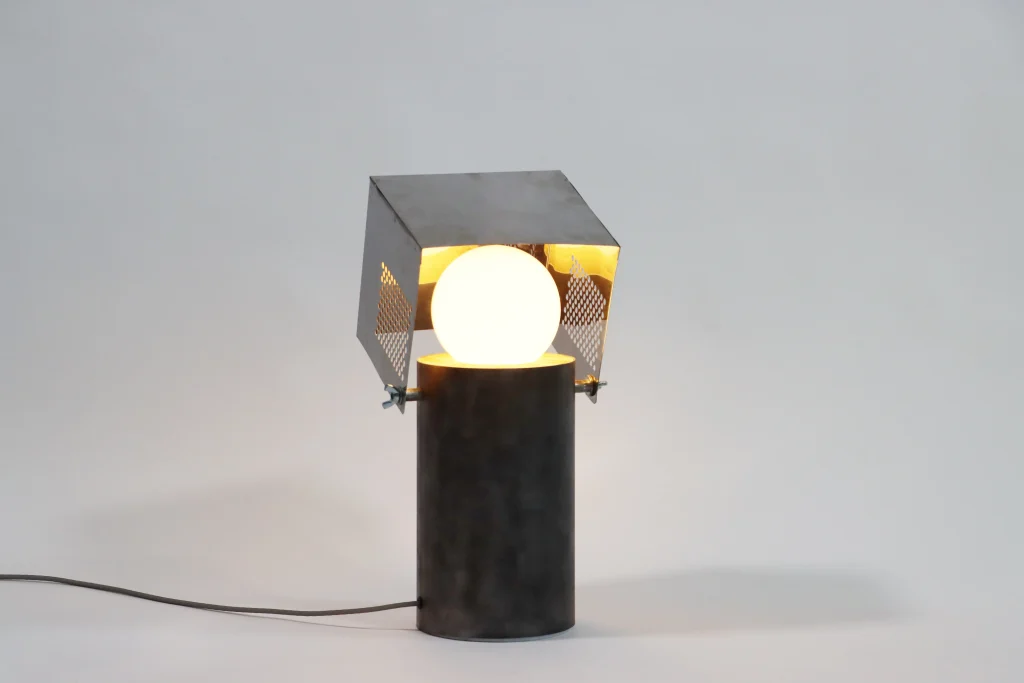

Metamorphosis of Waste: Transforming the Discarded into Design
At the spectrum’s furthest point, designers create entirely new materials from recycled components, where original objects disappear completely into unprecedented forms. FabBRICK exemplifies this approach, transforming textile waste into modular building blocks that mimic the appearance and tactile qualities of stone. By taking the soft, pliable nature of fabric and molding it into the rigid, structural form of brick, the resulting furniture reimagines traditional material roles, while reinforcing sustainability narratives through its construction process.
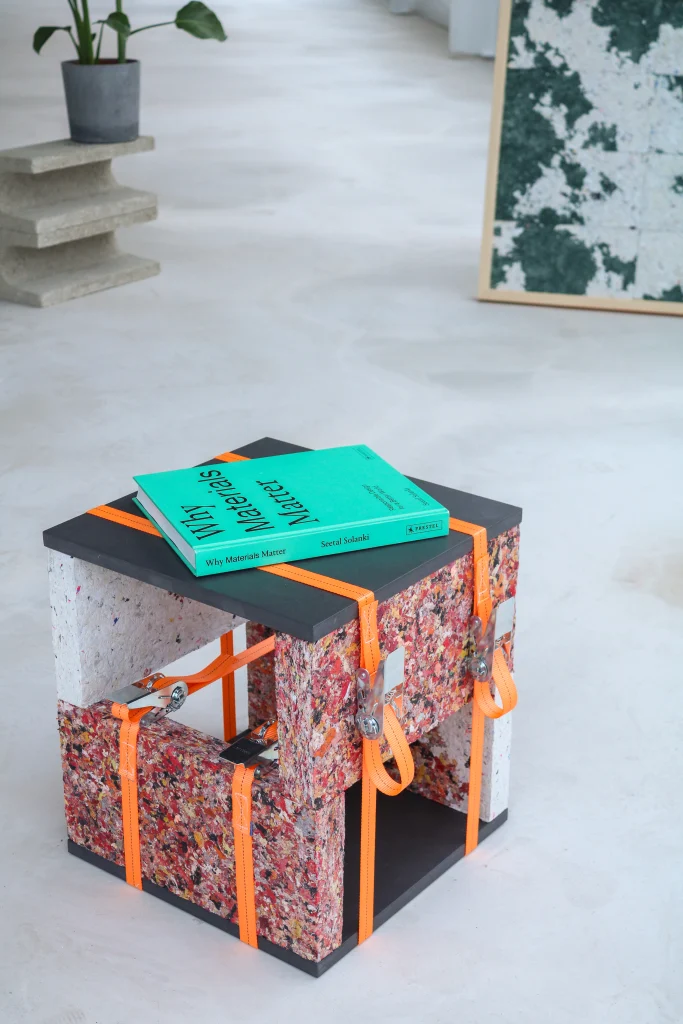

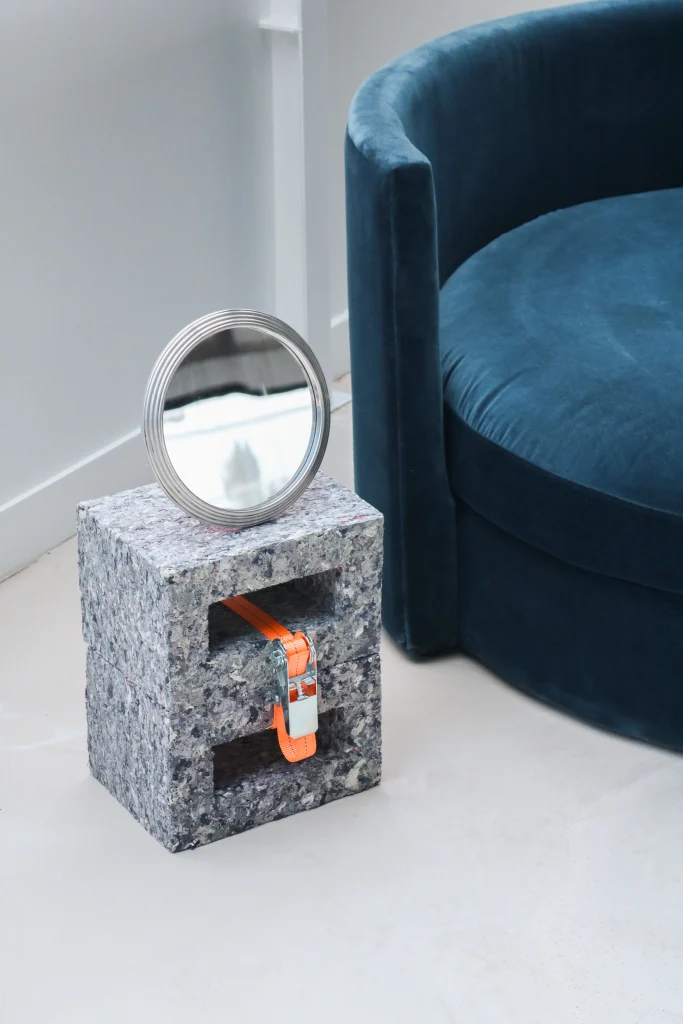

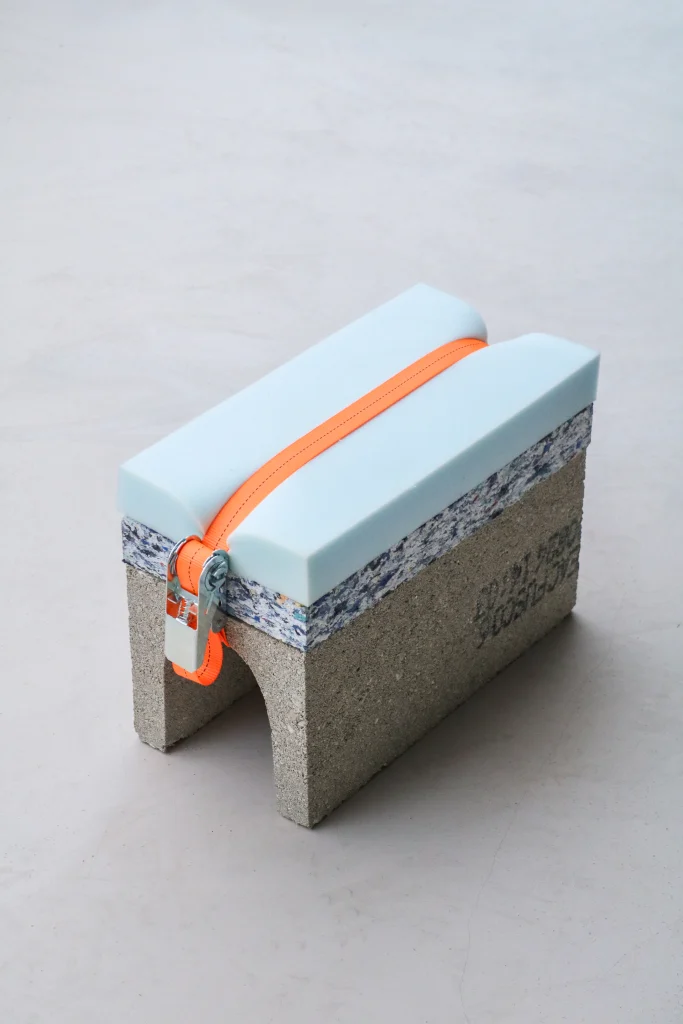

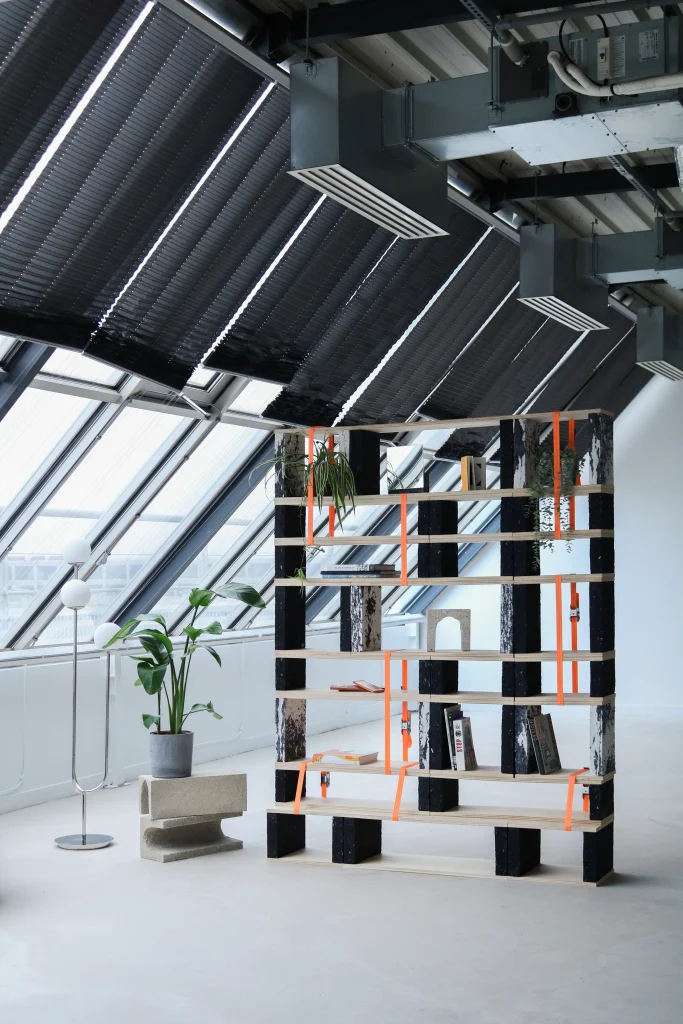

Atelier SOHN’s B.S.P Series developed over five years of experimentation with Samsung factory waste, initially creating recycled plates from large discarded machining units. The designer eventually realized that original components possessed inherent aesthetic qualities requiring minimal intervention – a revelation that fundamentally altered their material philosophy.
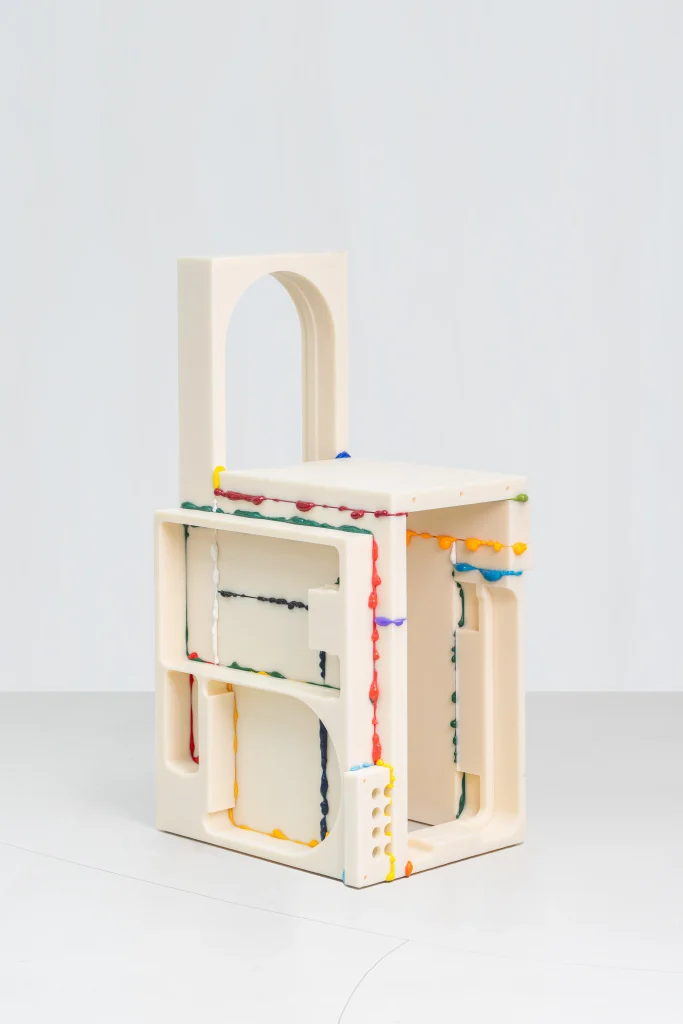

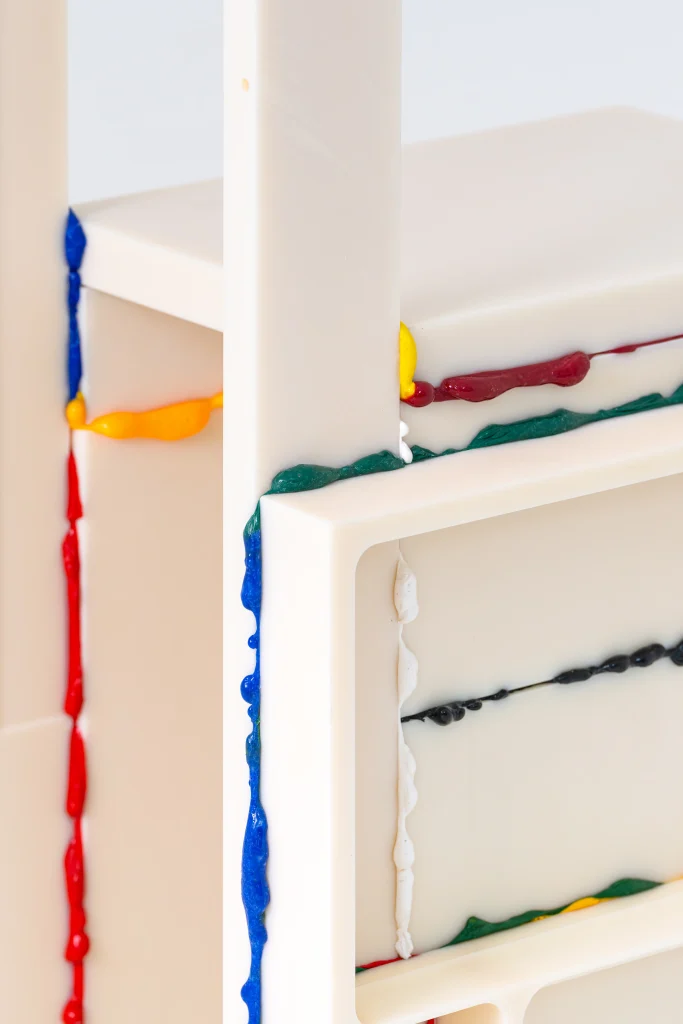

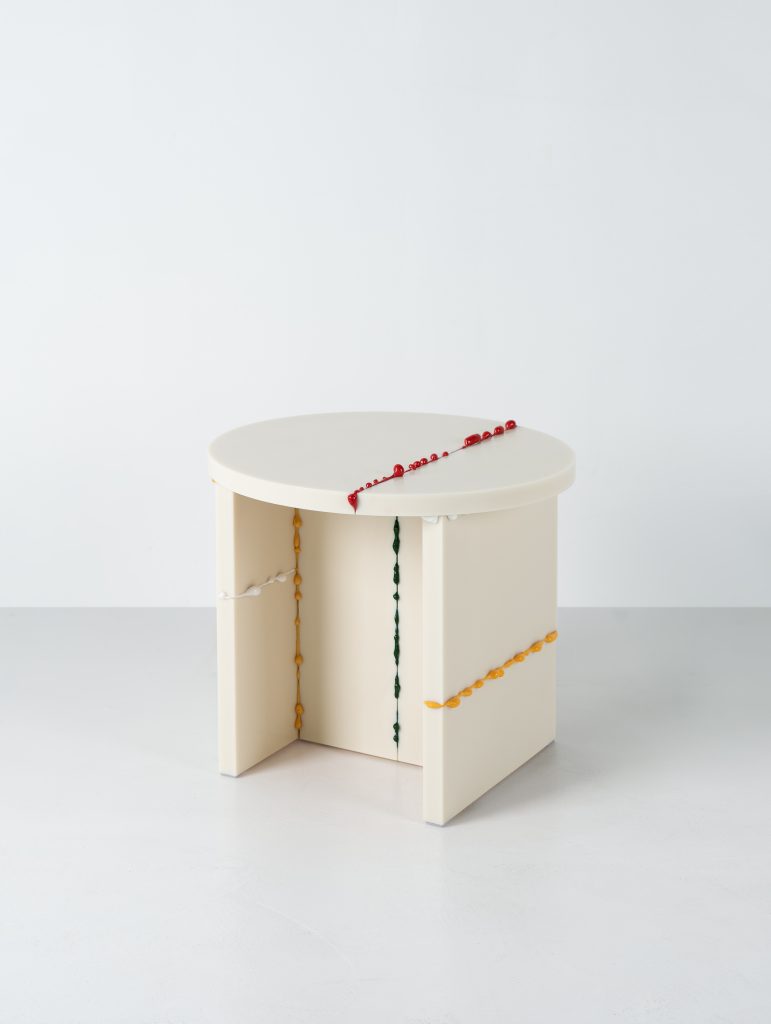

Sam LaRocco’s Side Jables from the Puff-Ply Series combine recycled denim with resin through industrial corrugation processes typically reserved for architectural applications. The resulting furniture bears no visual resemblance to its textile origins yet embeds sustainability principles within its structural logic.
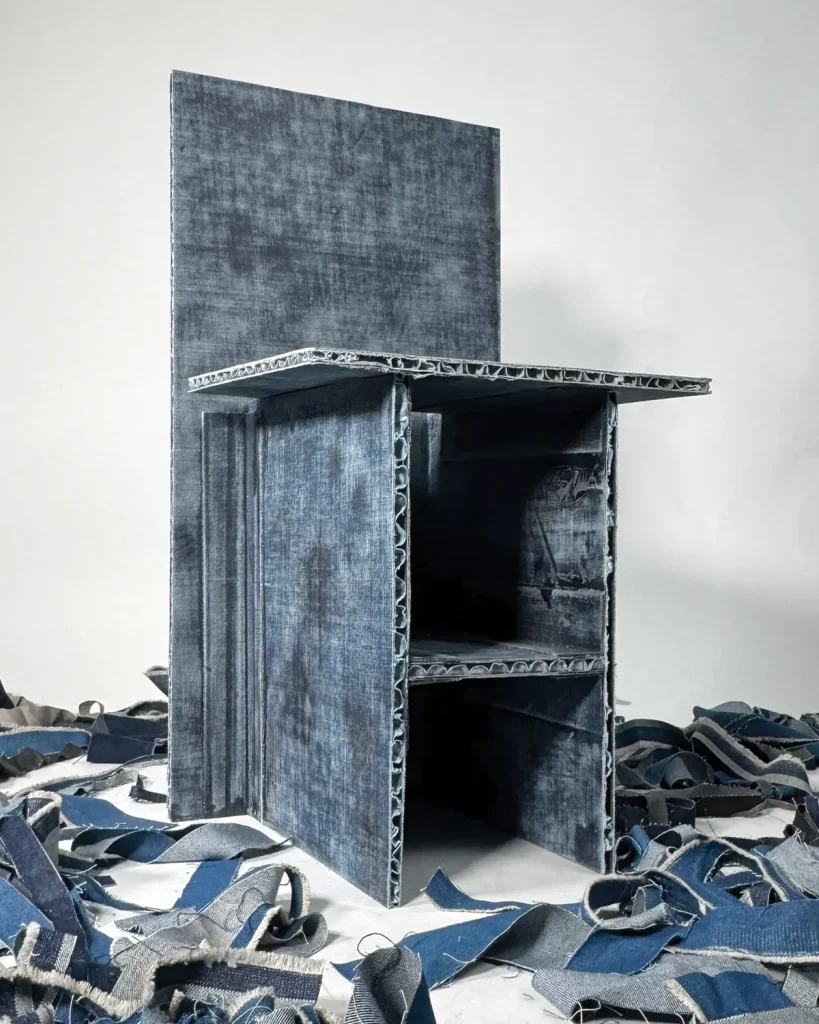

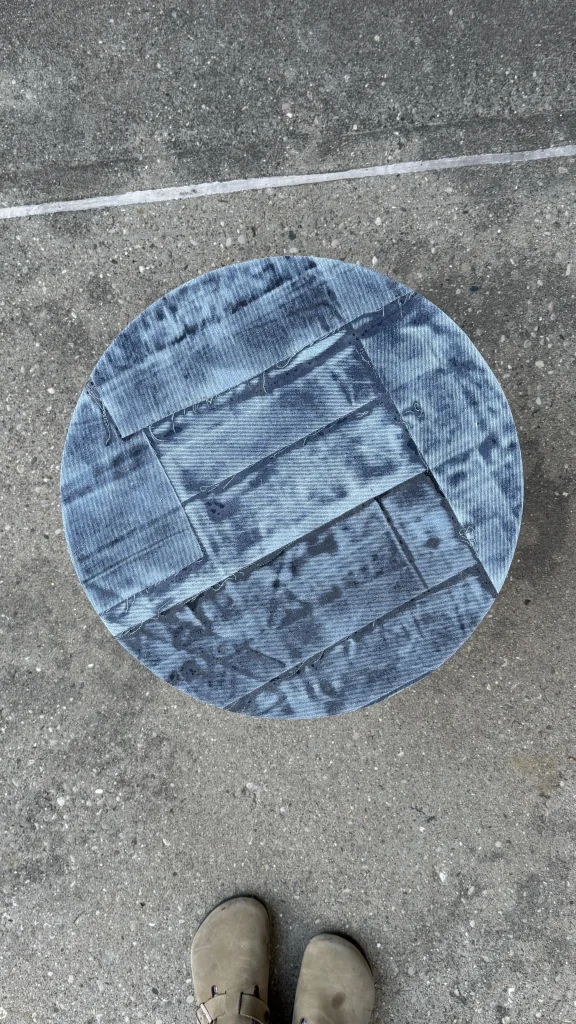

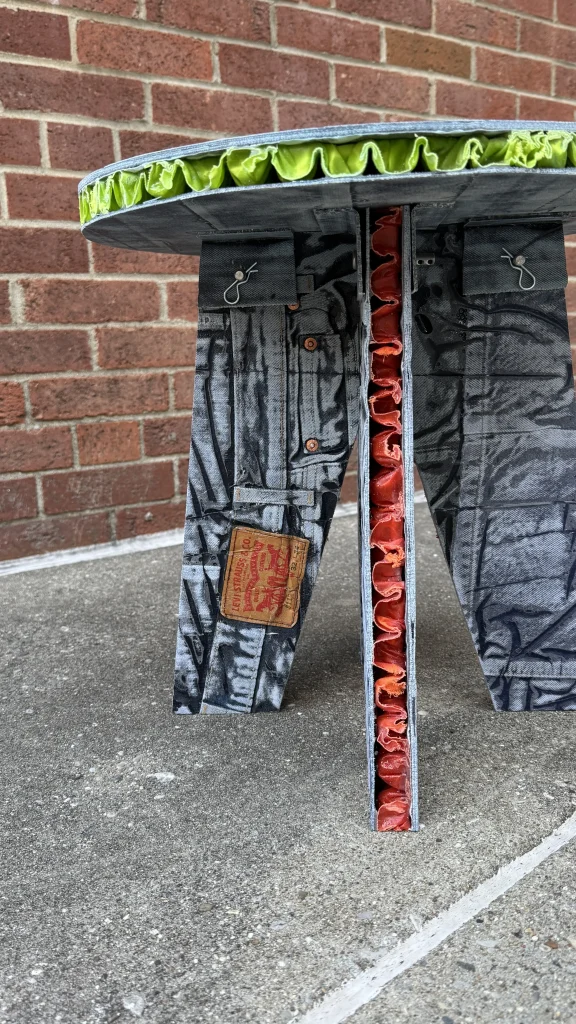

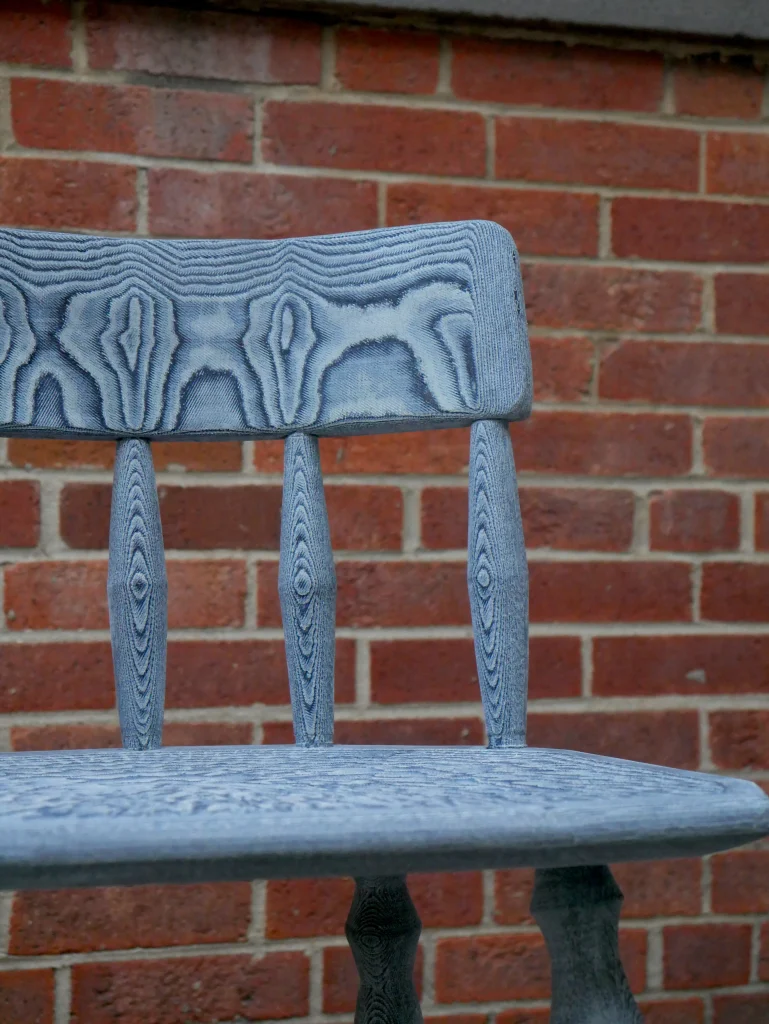

Cultural Implications of Material Transformation
These practices reflect broader shifts toward a circular economy while questioning modernist assumptions of progress and newness. Upcycled design suggests alternative temporal relationships where past, present, and future converge within single objects.
The movement also democratizes access to design by elevating humble materials – thrift store finds, construction waste, industrial byproducts – into sophisticated aesthetic statements. These approaches embed environmental consciousness directly into the design process, making sustainability central rather than auxiliary. These designers encourage new relationships between past and future, utility and beauty, disposal and preservation. Thrifted design offers both practical solutions and philosophical frameworks for reimagining our relationship with the material world.
-

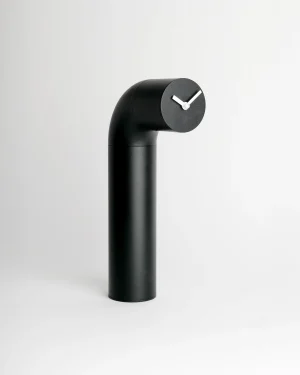 Stadia Clock Black – Stainless Steel Table Clock
Stadia Clock Black – Stainless Steel Table Clock -

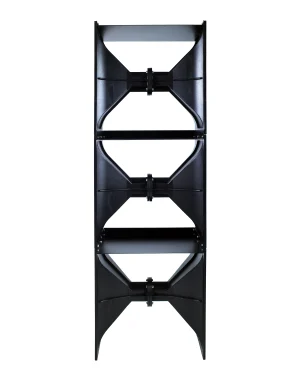 Horn Series – Module Shelves
Horn Series – Module Shelves -

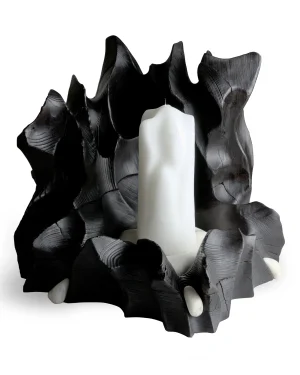 Wildrose Candle Holder
Wildrose Candle Holder -

 Cast-iron Bracket Rack
Cast-iron Bracket Rack -

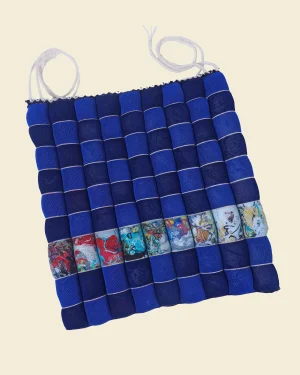 Upcycled Seat Cushion
Upcycled Seat Cushion -

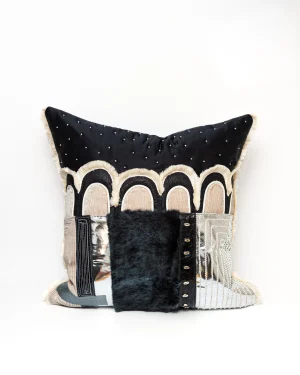 Cushion 01
Cushion 01 -

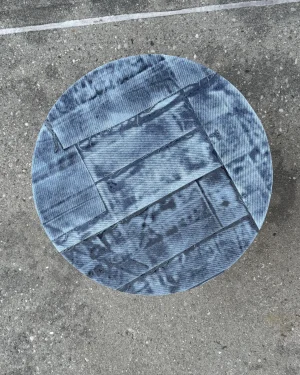 Side Jable – Recycled Fabric Sheet Tables
Side Jable – Recycled Fabric Sheet Tables -

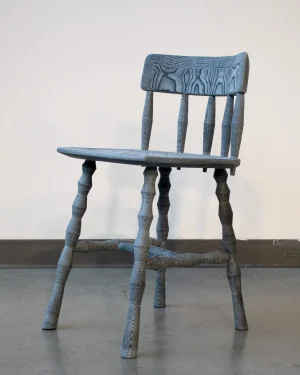 The Denim Windsor
The Denim Windsor -

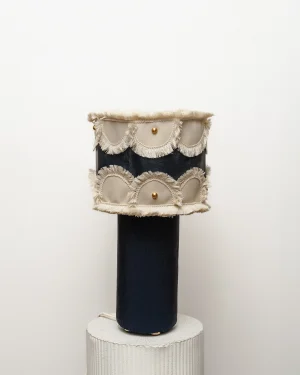 The Quilted Lamp 01
The Quilted Lamp 01 -

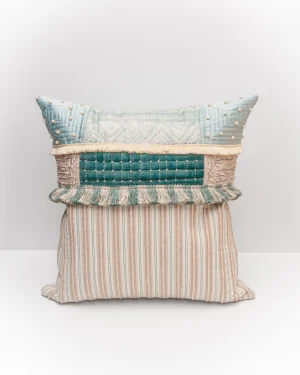 Cushion 02
Cushion 02 -

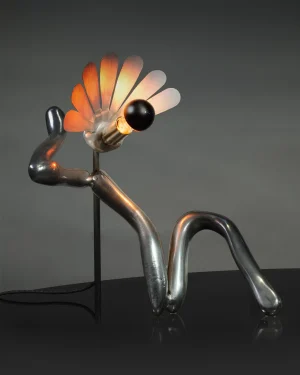 The Voguing Lamp 1 – Scrap Aluminum
The Voguing Lamp 1 – Scrap Aluminum -

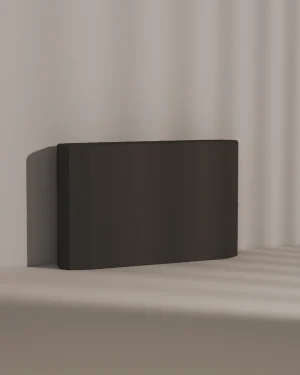 Giovanni – Paper Pulp Consoles
Giovanni – Paper Pulp Consoles -

 Giovanni V2 – Paper Pulp Stool
Giovanni V2 – Paper Pulp Stool -

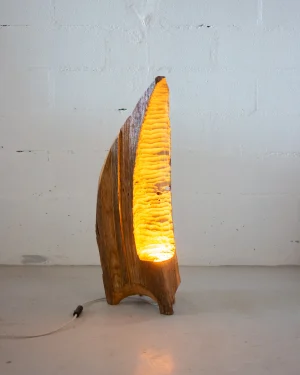 A Plant From My Garden – Antique Wood Lamp
A Plant From My Garden – Antique Wood Lamp -

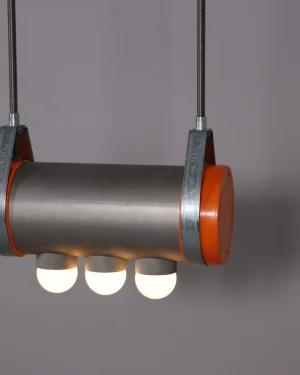 Three Bulb Upcycled Light
Three Bulb Upcycled Light -

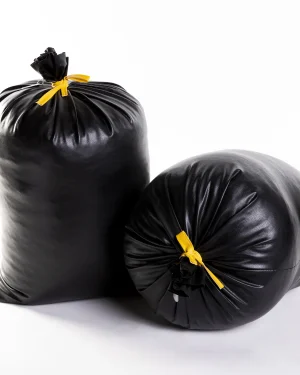 Your Chairs Are Trash – Artificial Leather Bean Bags
Your Chairs Are Trash – Artificial Leather Bean Bags
